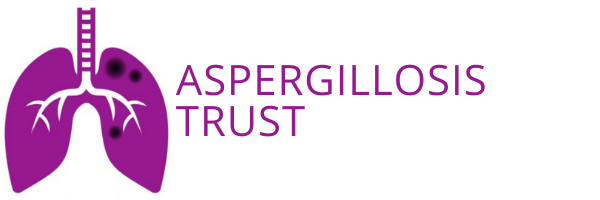Sandra Hicks’s Covid-19 Story
During the last weekend of February 2020, I had a bit more of a productive cough than usual. I stayed in bed, as I felt even more fatigued than usual too and that’s already a lot! I have aspergillosis, Nontuberculous Mycobacteria (NTM), asthma and bronchiectasis colonised with Pseudomonas. The underlying reason for these atypical infections is a rare primary immunodeficiency (PID) syndrome. I have to infuse immunoglobulin (antibodies) subcutaneously once weekly at home, as my immune system doesn’t make antibodies very well. That’s in addition to daily quadruple (antibiotic) therapy for NTM, another antibiotic as prophylaxis against Staph. aureus and PCP and IV caspofungin (antifungal) for 14 days every 8-10 weeks.
On the 1st March, I had a severe pain in my right hand side in my ribs and my neck. It felt to me like I’d pulled an intercostal muscle (ribs) and an accessory muscle (neck). The pain was so bad that I could hardly cough and I certainly couldn’t breathe in deeply. I also had worsening shortness of breath. I realised it was better to get on top of the pain, to be able to clear my lungs. It was a productive cough though, not a persistent, dry cough as listed in the COVID-19 symptoms. So I felt it didn’t really match with the description of the ‘red flags’ for it. I didn’t have a sore throat at any point. I did have a high temperature, which went up to 39.5°C during the first week of March. In addition to that I had the neurological symptoms of headache and dizziness, but not impaired taste and smell. The final symptom was coughing-up dark red, thick mucous (haemoptysis) a few times a day, for several weeks. I’ve never had haemoptysis to that extent ever before, or that dark a red. The mucous can sometimes be ‘pinky’ in colour. The improvements on my chest CT scan didn’t reflect the development of haemoptysis either. So it seemed to me like something else was going on in addition to the usual lung problems.
I had phone consultations instead of outpatient clinic appointments with two consultants. The first one was with my Mycology consultant on 25th March. He felt that it’s possible that I could have had COVID-19, despite not having the sore throat. We discussed if I hadn’t had it, should I go into hospital daily for my 14 days of IV caspofungin, due to being in the shielding category and having to stay at home for 12 weeks, or should I delay treatment? The balance of risks were in favour of starting sooner due to lower numbers of cases of COVID-19 in the UK compared to Europe at that time. We also talked about the SARS-CoV-2 virus entering the respiratory system via ACE2 receptors in the epithelial cells. We both thought that ACE inhibitors (medicines ending in ‘pril’ e.g. ramipril) used to reduce high blood pressure should help prevent infection, but that is pure speculation. There is confusion in this area, so research is needed!
The Immunology consultant also said on 27th March said that it was possible I’d had COVID-19. However, there is no way of knowing for sure if I have. COVID-19 blood (serological) tests look for the presence of antibodies produced by the immune system. If anti-COVID-19 antibodies are present, then that means a person has had the infection in the past. However, these tests might be inaccurate in people with primary immunodeficiency syndromes, who don’t tend to make antibodies properly. It differs in the various PIDs. Some people with PID will make a detectable antibody response but most won’t. Also immunoglobulins are manufactured from donated plasma from people in the US. In time there will naturally be antibodies to COVID-19 in these products. This will help provide protection, but test results for COVID-19 infection won’t be accurate. The consultant said that they don’t know yet if having COVID-19 confers immunity. He also said that if they need patients to come in for procedures then they pull the curtains inbetween beds, everyone wears masks, staff also wear aprons and gloves for infection control purposes.
The only benefit from having a primary immunodeficiency syndrome I’ve found so far, is that we might not have severe COVID-19 due to the lack of a ‘cytokine storm’. These cytokines (proteins) control inflammation in the immune system. If they go into overdrive they can cause havoc in the lungs and cause acute respiratory distress syndrome (ARDS) and respiratory failure. We may have mild to moderate COVID-19 if we become infected, rather than the severe form. This is due to our immune systems being dysfunctional and unlikely to become overactive.
So, I still don’t know if I have had COVID-19 but it is possible! I will probably never know. If this was mild or moderate COVID-19, it was still bad enough on top of the usual lung conditions though…
Important points to note:
You don’t have to experience absolutely all of the symptoms for it to be COVID-19.
So ensure you keep 2m away from people if you have any of the symptoms at all to avoid infecting them accidentally. It will also ensure that you don’t catch COVID-19 from them.
It is possible to have COVID-19 without the sore throat for example. It can also be possible just to have neurological symptoms, such as dizziness, headache and impaired sense of taste and smell. Please see: www.pharmaceutical-journal.com/news-and-analysis/research-briefing/neurological-symptoms-common-in-covid-19-patients-researchers-say/20207915.article?firstPass=false
Wearing a mask only prevents you from passing on the virus to others. It doesn’t stop you from getting COVID-19.
Ideally, if you need to have any medical procedures where you can’t keep 2m away, for example, blood tests, ensure that you are wearing a mask and so is the person carrying out the procedure. Wash your hands afterwards. When you get home, remove your clothing and have a wash. Then put your clothes in the wash.

